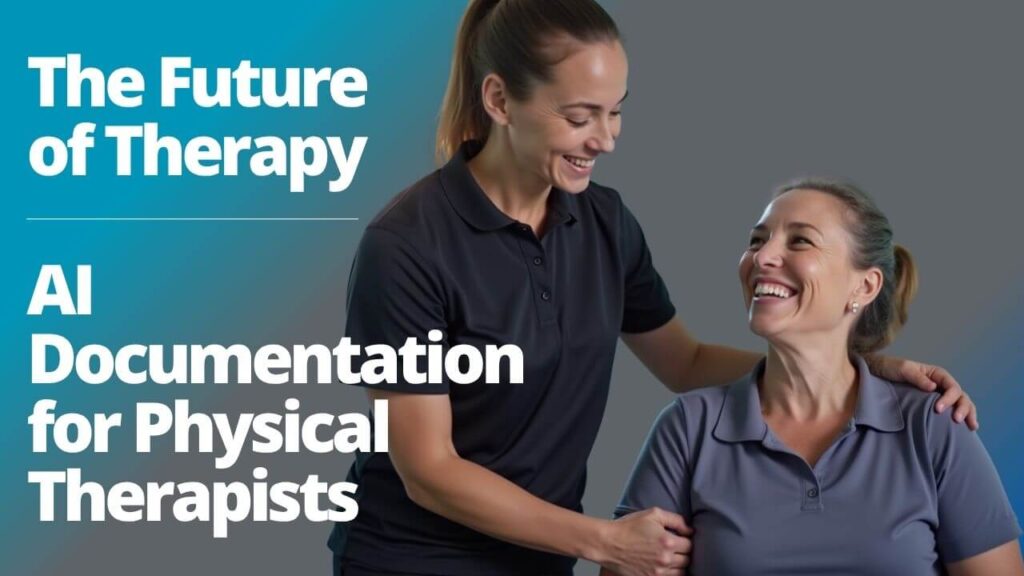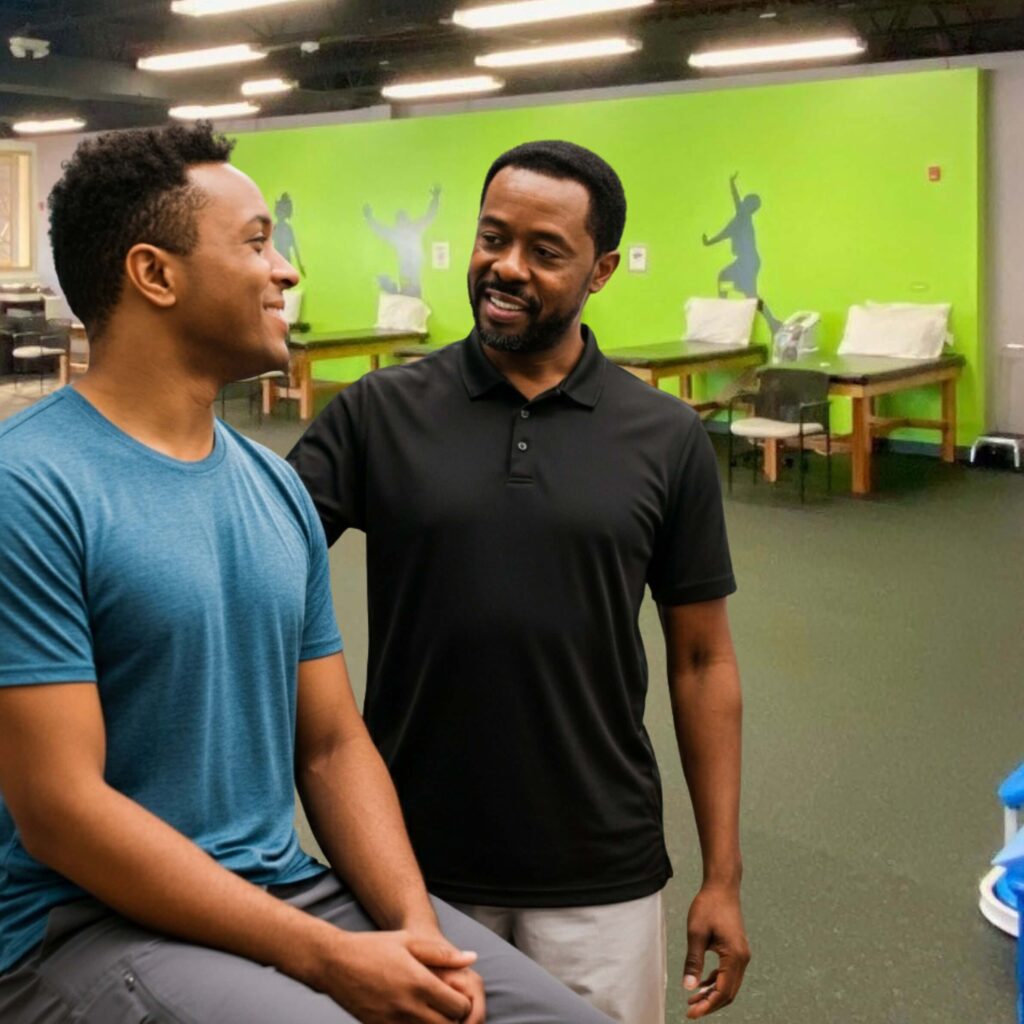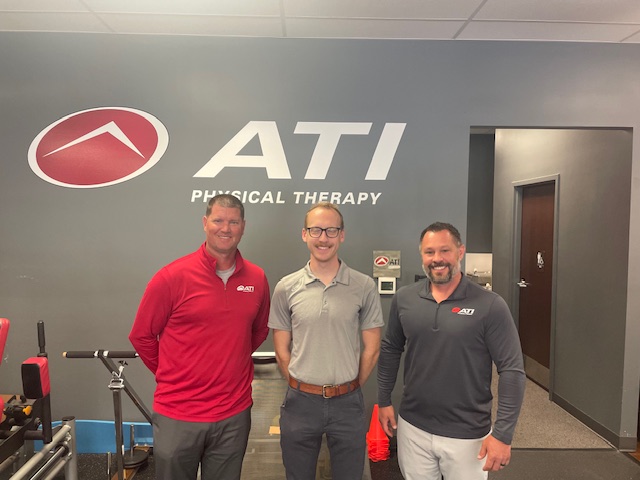
The Evolution of Physical Therapy Documentation: From Paper to AI
For many physical therapists, the journey of their career has mirrored the rapid evolution of technology. A decade ago, the day-to-day work of a physical therapist looked quite different; it was a world of paper charts, handwritten exercise logs, and manually filled-out billing forms.
Today, we’re on the cusp of the next great leap: AI documentation for physical therapists.
As CORA physical therapist, Emily Elliott, PT, DPT, recounts, “My first job right out of school, I was still doing documentation on paper. I was handwriting the exercise log; I was handwriting the billing.”
Fast forward to today, and the landscape has changed.
Digital advances brought electronic health records (EHRs) and digital documentation, a significant leap forward in efficiency and organization.
With these advances, however, a new challenge emerged. Therapists, who entered the profession to work with people, found themselves spending more time tethered to a computer screen.
The very tools meant to simplify their lives often added to the administrative burden.
This struggle is a common refrain in the profession. “One of the other things that has been so challenging about being a physical therapist is more and more time is being spent behind a computer, and that’s not why I went to school,” Emily explains.
This sentiment speaks to the core passion of a physical therapist: to connect with patients, not keyboards.
Reclaiming the Patient-Therapist Relationship
At its heart, physical therapy is a profession built on human connection.
It’s about listening, empathizing, and collaborating with a patient to solve their unique problems. It’s about understanding the “heart of the matter,” as Emily Elliott puts it—what truly brought them into the clinic. This is the work that fuels a therapist’s passion and makes a real difference in a patient’s life.
The most profound moments in a therapist’s day often happen away from the desk. They occur during a hands-on session, a thoughtful conversation, or a moment of shared understanding.
These are the moments when a plan is forged to help a patient “get back to the things that they love.” The job is to be present, to observe, and to truly engage with the person in front of you.
Unfortunately, the constant pressure of documentation pulls therapists away from this essential work.
The need to remember specific details, to format notes correctly for billing, and to keep up with the ever-present administrative tasks can be a significant distraction. It’s difficult to be fully present with a patient when a ticking clock and a mountain of paperwork loom in the back of your mind.
This is where the new partnership between CORA Physical Therapy and Comprehend Health is changing the game.
AI scribe technology is not just another piece of software; it’s a tool designed to give therapists back their time and attention. By automating the documentation process, it allows clinicians to return their focus to where it belongs: the patient.
The Power of AI: A Silent Partner in Patient Care
Imagine a world where your clinical notes are written as you speak.
Comprehend Health works by listening to the patient encounter and intelligently drafting the documentation for the clinician. It’s a silent partner, working in the background so you can be fully engaged in the foreground.
The benefits of this technology are multifaceted and powerful.
First and foremost is efficiency. The time a therapist spends on documentation can be a major part of their day. By having the AI scribe handle the initial draft of a note, therapists can significantly reduce their time behind a desk.
You can use reclaimed time for what matters most: spending an extra moment with a patient, reviewing a complex case, or simply taking a much-needed break.
Secondly, the AI scribe provides a new level of accuracy. The platform captures the details of the conversation as they happen.
Real-time documentation reduces the chances of errors that can occur when a therapist is trying to recall the specifics of a session hours later. It also captures all necessary information for billing and compliance, which reduces added stress.
AI documentation technology is not about replacing the human element; it’s about amplifying it. It’s about empowering therapists to be better at their jobs by removing the barriers that stand in their way.
More Than Just AI Documentation: A Strategic Asset for the Modern Physical Therapist
The integration of AI documentation is more than a simple convenience; it’s a strategic advantage for any physical therapy practice. It’s an investment in the people who make the practice run and the patients they serve.
“What I love the most about Comprehend Health is it allows us to do what we do best.”
-Emily Eliott, PT, DPT, Clinical Performance Manager
CORA Physical Therapy
The best technology empowers people to excel at their core competencies. The advances in AI scribe technology are not a distraction or a complication; they are an asset that a practice can leverage to improve its operations from the inside out.
For CORA Physical Therapy, this translates to therapists who feel they can perform their jobs effectively. Clinicians feel more fulfilled when they spend quality time with patients instead of getting bogged down by administrative tasks.
For the patients, the benefits are even more direct.
When a therapist is truly present, the patient feels heard, valued, and understood. The focus shifts from the administrative hurdles of the healthcare system to the personal journey of recovery.
This leads to better communication, more effective treatment plans, and ultimately, better outcomes.
The AI scribe frees the therapist to “listen to the heart of the matter of what brought them in and to be able to implement meaningful solutions.”

The Future is Now: Taking Back Our Time
The journey from paper documentation to AI-powered scribes is a testament to the relentless pursuit of better, more efficient care.
The future of documentation supports the return to the fundamental purpose of the physical therapy profession. Technology that allows the therapist to move away from the desk and back to the patient.
The CORA and Comprehend partnership represents a significant step forward in this journey. This tool allows for “more efficient, more accurate documentation and more time getting to the root of the issues of the patient that’s in front of us.”
For any physical therapist who has ever felt the pull between a computer screen and a patient’s story, this technology offers a solution. Clinicians can once again focus on the meaningful work that brought them into the profession in the first place.
The future of documentation isn’t just about making notes faster; it’s about making therapy better.
The post The Future of Therapy: AI Documentation for Physical Therapists appeared first on CORA Physical Therapy.









